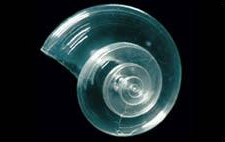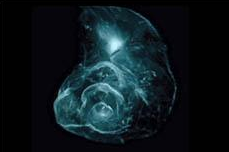Scientists, managers lay foundation for developing acidification criteria at workshop

Scientists and coastal managers from across the West Coast began laying the groundwork for the development of ecologically relevant criteria for coastal ocean acidification during a two-day workshop in October at Stanford University.
At the workshop, titled An Uncommon Dialogue: Ocean Acidification: Setting Water Quality Goals, participants sought to develop consensus around how to apply ocean acidification science to improve management of the coastal ocean, as well as what research is most needed to support development of management criteria. The October 17-18 workshop was hosted by Stanford University’s Woods Institute for the Environment, the Center for Ocean Solutions, the California Ocean Protection Council and SCCWRP.
In particular, workshop participants stressed the need for improved understanding of how the chemical indicators of ocean acidification (e.g., carbonate saturation state, pH) relate to how biological communities respond to acidification (e.g., free-swimming pteropods, or sea snails).
The pH-based criteria that West Coast managers have been using for decades to protect ocean health are based on outdated science, with marine communities harmed at pH thresholds that fall within the criteria’s range.
Furthermore, because development of ocean acidification criteria to manage coastal waters is still years into the future, participants discussed how they could advance acidification science to a point where West Coast managers could use it to improve their monitoring and management practices in the short term. For example, participants explored how to use observational acidification data in tandem with a West Coast-wide ocean acidification modeling effort to help quantify natural variability in ocean state.

The timely workshop follows on the heels of two new state laws (SB 1363 and AB 2139) that direct the California Ocean Protection Council and other state agencies to implement the recommendations of a 20-member West Coast advisory panel of leading ocean scientists. The West Coast Ocean Acidification and Hypoxia Science Panel released a series of short- and long-term management actions for combatting ocean acidification in April; SCCWRP’s Dr. Steve Weisberg and Dr. Martha Sutula were among the panelists.
Already, the California Ocean Protection Council has responded to the new legislative directive by announcing funding for a broad suite of acidification-related initiatives, including a SCCWRP-led effort to develop a synthesis of existing science regarding ocean acidification indicators and their response thresholds, and an expansion of the ongoing West Coast acidification modeling effort. The West Coast acidification model, which is being co-developed by SCCWRP, seeks to understand which marine habitats are most vulnerable to acidification and to what extent local, land-based sources of pollution are exacerbating acidification.
For more information, contact Dr. Steve Weisberg.
More news related to: Climate Change, Ocean Acidification and Hypoxia, Top News